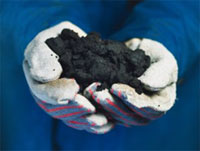Crude price nears 'tipping point' for new oil sands projects
 A sustained slump in oil prices and continuing economic woes puts at risk new oil sands projects key to the Canadian and Alberta economies.
A sustained slump in oil prices and continuing economic woes puts at risk new oil sands projects key to the Canadian and Alberta economies. The North American benchmark price for oil dropped Thursday to $80.51 (U.S.) a barrel, down by $5.41, pulling down energy stocks across the board. While oil sands companies say they make their decisions based on forecasts stretching decades ahead, new projects could be in trouble if prices fell to below $80 and stayed there for a prolonged period.
“Eighty bucks tends to be that mark where some of those new projects do become uneconomic,” said Todd Hirsch, a senior economist at ATB Financial in Calgary. “There might be some of those that end up being postponed [or cancelled]. … That’s the tipping point for a lot of projects.”
Mr. Hirsch added that he doesn’t envision “any sort of crisis” unless prices slipped below $70, and stayed there.
“Then we will start to see some re-evaluation and come back to the drawing board,” he said.
The ramifications reach beyond Alberta, given projections that new oil sands developments could add more than $2.1-trillion to the national economy over the next 25 years, according to the Canadian Energy Research Institute. Tens of thousands of jobs also hang on growth in northern Alberta.
Steam-assisted gravity drainage (SAGD) efforts, which use wells rather than strip mines to gain access to bitumen, are at greatest risk in any prolonged slump. While mines dominate the oil sands now, SAGD techniques will be needed to get access to roughly 80 per cent of the resource in northern Alberta. Existing mining projects, which have been around for decades with billions already invested, are better shielded from lower prices.
Because oil sands projects take years to develop and sit on decades worth of crude production, executives say the current price of oil does not influence their planning.
“[Today’s price] has no affect on us,” said Stephen Brink, Cenovus Energy Inc.’s (CVE-T30.930.391.28%) chief of market fundamentals and hedging. “It would have to be fairly protracted and it would have to affect our long-term view of oil prices before we were to rethink our strategy.”
Even if the price of oil dropped below Cenovus’s break-even point, which includes operating costs, capital costs, and a 9-per-cent return, the company would not necessarily pull back. At its Foster Creek project, that point rings in between $40 to $50, and $45 to $55 at Christina Lake.
Growth in developing markets like China and India is a crucial influence on Cenovus’s price forecasts.
“They are what gives us the belief that the world needs oil in the long-term,” Mr. Brink said. “If we were to see some material change in their direction, then we may stand back.”
China showed a blip in demand in August, according to Platts, a global research firm that tracks the energy industry. China used an average of 8.98 million barrels of oil a day in August, the lowest level since October, 2010, Platts calculates. However, when consumption is compared year-over-year, the August rate climbed 7 per cent.
Smaller companies with operations outside of the oil sands, however, will have to step more carefully. ARC Resources Ltd., (ARX-T20.87—-%) which would typically take advantage of a weak market by hiring new employees, recently backed off a potential acquisition in order to protect its balance sheet, said David Carey, the company’s senior vice-president of capital markets.
But perspective, he said, is important. “Eighty-dollar oil is still a pretty good number.”
You can return to the main Market News page, or press the Back button on your browser.

